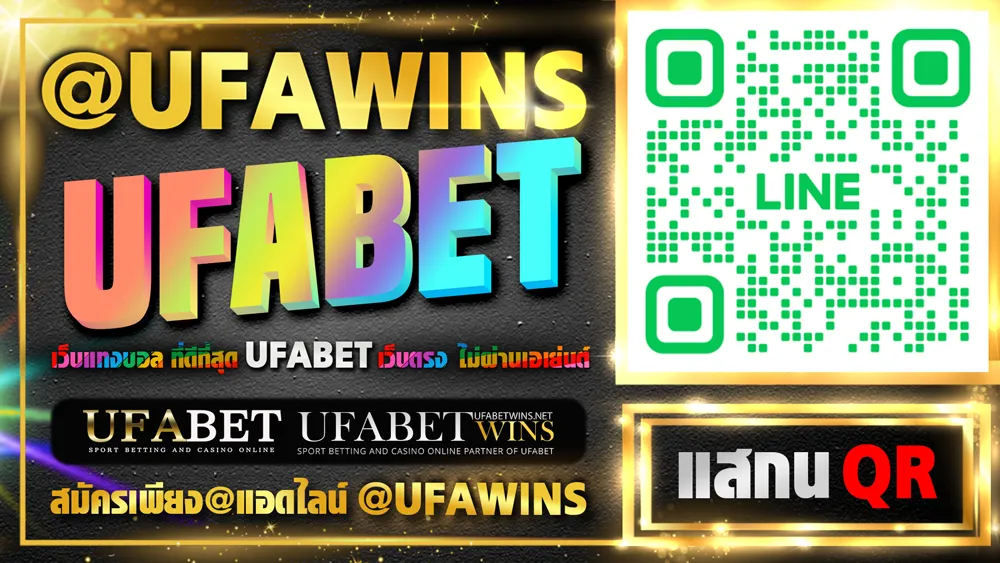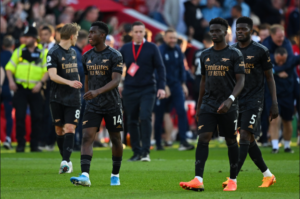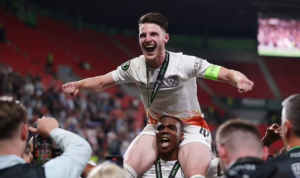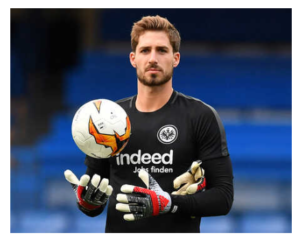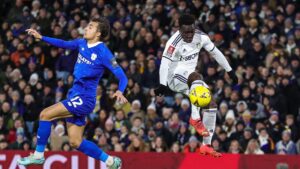UFABETสมัครเล่นยังไง เว็บหลักUFABET ขั้นตอนไม่ยุ่งยาก
UFABETสมัครเล่นยังไง มีการปรับปรุงต้นแบบการให้บริการ สมัครเว็บตรง อย่างสม่ำเสมอสำหรับเพื่อการเข้ามาเล่นเกมพนันออนไลน์ภายใต้เว็บไซต์พนันยูฟ่าเบทที่นี้ซึ่งนับได้ว่าเป็น เว็บไซต์พนันยูฟาเบท ที่มีความสามารถด้านการเงินสูงทั้งมีโภคทรัพย์เป็น เว็บไซต์ยูฟาเบทไม่ผ่านเอเย่นต์ สามารถทำรายการต่างๆได้อย่างเร็วฉับไวเชื่อมั่นสำหรับเพื่อการฝากว่าสามารถทำเป็นในทันทีไม่กี่นาทีท่านก็สามารถเข้ามาเล่นเกมพนันที่ท่านชื่นชอบได้อย่างยอดเยี่ยมด้วยทั้งยังเมื่อทำวางเดิมพันจบก็สามารถแจ้งถอนผ่านทางapplicationLINE UFABETฝาก-ถอนระบบออโต้ ทำตามอย่างขั้นตอนไม่กี่ขั้นตอนโดยมีคณะทำงานที่เป็น มือโปรชั้น สามารถสำรวจข้อมูลได้ครบโดยทำด้วยเครื่องอัตโนมัติสามารถจ่ายผลตอบแทนได้อย่างเร็วฉับไวข้างในไม่กี่นาทีโดยมีแบงค์ชั้นหนึ่งทั้งประเทศให้การรองรับซึ่งนับได้ว่าทางเว็บไซต์พนันออนไลน์ยูฟ่าเบทมีความยั่งยืนรวมทั้ง สมัครเว็บบอลวันนี้ มีการดำเนินการที่มีประสบการณ์มาอย่างช้านานและ UFABETเข้าสู่ระบบ ก็มีความโปร่งสบายใสแค่เพียงทำตามอย่างขั้นตอน สมัครแทงบอลยูฟา เนื้อหาให้กี่ขั้นตอนก็สามารถทำธุรกรรมด้านการเงินได้อย่างยอดเยี่ยมไม่ว่าจะเป็นการฝากเงินเบิกเงินหรือโอนเงินก็ต่างมีให้บริการอย่างสมบูรณ์ทุกแบบอย่างเป็นการตั้งเงื่อนไข ยูฟาเบทชั้นนำ ในการฝากเบิกเงินที่เยี่ยมที่สุดให้กับนักเสี่ยงโชคอย่างเห็นได้ชัดรวมทั้ง สมัครวันนี้รับเครดิตฟรี ยังมีคุณประโยชน์เป็นอย่างมากให้กับนักเล่นการพนัน ทุกคนกับการ ฝากถอนออโต้ เบิกเงินที่ไม่มีการจำกัดปริมาณยอดเงินในอัตราอย่างต่ำที่เป็นการสร้างจังหวะการเข้ามาลงทุนให้กับนักเสี่ยงดวงได้อย่างเห็นได้ชัดอีกด้วยเป็นการสร้างอิสระด้านการเงินให้กับนักการพนันทุกคนก้าวหน้าที่สุดอย่างแจ่มแจ้ง
สมัครเว็บตรงดีที่สุด กับเงื่อนไขไม่ซับซ้อน
เว็บแทงบอลที่เชื่อถือได้มานานกว่า10ปี ถ้าเกิดส่งผลผลกำไรเกิดขึ้นก็สามารถเบิกเงินออกมาใช้ได้ทันทีทันใดกับการไม่มีเงื่อนไขสำหรับเพื่อการเบิกเงินในอัตราอย่างน้อยอีกด้วย สมาชิกยูฟ่าเบท ด้วยสามารถทำแจ้งฝากได้อย่างเร็วทันใจมีการปรับปรุงแบบ เว็บตรงไม่ผ่านเอเยน์เชื่อถือได้สูงสุด กับการให้บริการเพื่อสร้างความเชื่อมั่นสามารถจ่ายผลตอบแทนได้อย่างเร็วทันใจครบถ้วนสมบูรณ์ทุกปริมาณมีการตารางการประลองและก็กลุ่มบอลให้เลือกอย่างนานัปการยังมีอัตราการเจรจาต่อรองซึ่ง เว็บตรงยูฟาเบทที่ดีที่สุด สามารถบอกให้เห็นอย่างแจ่มแจ้งแล้วก็มีสูตรเด็ดเทคนิคต่างๆเป็นการปรับปรุงเพิ่มความมากมายรวมทั้งความสบายสบายให้กับเหล่านักเล่นการพนันที่เข้ามาใช้บริการ UFABETดีที่สุดยอด นิยม2023 กับการสมัครรวมทั้งเมื่อเวลาเล่นเกมพนันจบก็สามารถแจ้งถอนได้ด้านในไม่กี่นาทีนี่เป็นของใหม่ที่ UFABETเว็บไซต์ไม่ผ่านเอเยนต์ พนันออนไลน์ยูฟ่าเบทสำหรับในการเข้ามาเล่นพนันในเว็บไซต์พนันออนไลน์ยูฟ่าเบทได้อย่างเต็มเปี่ยมรวมทั้งมีความปลอดภัยอย่างไม่ต้องสงสัยความน่าดึงดูดใจสำหรับการเข้ามาเล่น เว็บ พนันออนไลน์ เว็บ ตรง เกมส์พนันในเว็บไซต์พนันออนไลน์ยูฟ่าเบทนั้นเป็นการบริการที่เร็วทันใจฉับไวสำหรับเพื่อการฝาก-เบิกเงินได้อย่างมีประสิทธิไม่ว่าจะฝากเงินก็แน่ใจว่าเงินจะไม่หายยังอยู่อย่างสมบูรณ์หรือหากแม้เวลาเบิกเงินก็ทำได้อย่างไม่ยากเย็นสะดวกสำหรับ เว็บบอลดีที่สุด สำหรับการเบิกเงินใช้เวลาไม่นานอีกด้วยความมั่นใจสำหรับเพื่อการบริการเป็นเบิกเงินได้อย่างเร็วฉับไวสำหรับในการบริการ เว็บตรงเว็บUFAใหญ่ที่สุด ด้วยความคาดหมายของนักเสี่ยงโชคมีความจริงจังว่าจะได้รับบริการในประเด็นการเบิกเงินอย่างเร็วฉับไวเมื่อ UFABETเว็บตรงเล่นง่าย กระทำการเล่นพนันเสร็จก็อยากได้เงินสำนักงานวางเดิมพัน ชนะอย่างสมบูรณ์
UFABETสมัครสมาชิก พร้อม ลิ้งค์UFABET.com ง่ายที่สุด
สมัครยูฟาเบทแทงบอล สมาชิกนักเล่นการพนันสามารถปฏิบัติการธุรกรรมต่างๆด้านการเงินได้อย่างดีเยี่ยมรวมทั้งสามารถทำเงินได้กับการเข้ามาเล่น เกมส์พนันครบวงจร ประเภทต่างๆได้โดยง่ายเยอะที่สุดด้วย การเข้าระบบลิ้งยูฟาเบท.คอม การฝากถอนได้อย่างเร็วใช้เวลาไม่กี่นาทีนี้อีกด้วยหากพวกเราใช้เวลาไม่นานสำหรับ ทางเข้าระบบ การฝากเงินได้อย่างเร็วก็อยากได้การบริการสำหรับในการเบิกเงินได้อย่างเร็วเหมือนกันถือเป็นการมอบสิ่งที่ดีให้กับเหล่านักเสี่ยงโชคโดยไม่มีเล่ห์กลกลลวงอะไรก็แล้วแต่มายุ่งเงินทุกบาทสำหรับ ช่องทางหลักยูฟาเบท เพื่อการฝากถอนจะได้อย่างสมบูรณ์และก็รวดเร็วทันใจฉับไวที่สุดสำหรับการทำรายการต่างในเว็บไซต์พนันออนไลน์ยูฟ่าเบทนี้ด้วยเว็บไซต์พนันออนไลน์ได้ให้บริการ แอดไลน์ยูฟาเบท ในเรื่องของการบริการเกมออนไลน์กว่า10ปีซึ่งเป็นการบริการที่ล้วนแล้วมีมาตรฐานแล้วก็มีความเป็นมือโปรอย่างมากโดยคณะทำงาน ยูฟาเบทเว็บตรง ที่พร้อมจะให้บริการตลอด1วันการพัฒนาต้นแบบเพื่อมีมาตรฐานที่ดีสำหรับเพื่อการอำนวยความสะดวกสำหรับในการเข้าถึงเกมพนัน เว็บมาแรงอันดับ1 ได้อย่างเร็วฉับไวโดยการฝากถอนด้วยเครื่องออโตเมติกซึ่งสามารถทำเป็นเมื่ออยากเพราะว่าพวกเรามองเห็นได้ว่าในสมัยเศรษฐกิจที่ไม่ดีอย่างงี้เหล่านักเล่นการพนันหรือบุคคลที่ประทับใจในเกมพนันต้องการเข้ามาหาเงินจากการเล่น เว็บไม่ผ่านเอเยนต์ พนันออนไลน์ซึ่งถือว่าเป็นสามารถเข้าถึงได้ง่ายที่สุดด้วยการใช้โทรศัพท์เคลื่อนที่เชื่อมต่อด้วยสัญญาณอินเทอร์เน็ตแล้วก็เหตุหนึ่งที่ทำให้เหล่านักเล่นการพนันมีความเชื่อถือสำหรับในการให้บริการ เว็บราคาดีที่สุด ของเว็บไซต์พนันออนไลน์ยูฟ่าเบทจ่ายจริงไม่จำเป็นที่จะต้องมาวิตกกังวลหรือกลุ้มใจเว็บไซต์พนันออนไลน์นี้เมื่อ สมัครฟรีมีเครดิตฟรี เล่นพนันแล้วชำระเงินตามจริง
แทงบอลออนไลน์ เว็บไหนดี ที่ไม่ถูกโกง?
เป็นเว็บไซต์ เว็บแทงบอลฟรี ไม่ มีขั้นต่ำ ที่มีชื่อในแวดวงก็เลยไม่ต้องการที่จะอยากที่จะเสียชื่อเสียงอย่างแน่แท้ไม่มีความจำเป็นที่ต้องคิดมากหรือกังวลในเมื่อพวกเราเข้ามาสมัครเล่นกับเว็บไซต์ที่พวกเราสมัคร เว็บแทงบอลออนไลน์ที่ดีที่สุดในไทย แล้วรวมทั้งเกิดเรื่องที่สำคัญสำหรับนักการพนันเมื่อเข้ามาเล่นพนัน เว็บบอลถูกกฎหมาย แล้วหลังจากนั้นก็จะต้องได้เงินกลับไปถ้าหากมิได้อาจจะมีการเกิดปัญหาตามมาคราวหน้าจ่ายจริงแน่ๆ UFA ฝากถอนระบบอัตโนมัติ เรื่องเงินๆทองคำๆไม่เข้าใครออกใครอยู่แล้วเกิดเรื่องธรรมชาติยิ่งในเวลานี้เงินหายากมาด้วยผู้ที่เข้าพนันบอลก็จำต้องกลัวเงินหายปกติที่ผู้คนจำนวนไม่ใช้น้อยคงจะมองเห็นแล้วกับการถูกโกงเงินแล้วไม่จ่ายจากการพนันบอลออนไลน์ UFABETฝ่ายบริการ จะตอบปัญหาการใช้ชีวิตที่ล้ำยุคมากขึ้นเรื่อยๆของเหล่านักเสี่ยงดวงสำหรับในการเข้ามาเล่น เว็บตรงยูฟาเบทยอดนิยม พนันออนไลน์กับเว็บไซต์ยูฟ่าเบทที่นี้โดยสามารถฝากถอนโอนได้อย่างสะดวกเร็วเป็นอย่างมากสามารถทำรายการธุรกรรมทางด้านการเงินได้โดยสวัสดิภาพแล้ว แทงบอลสเต็บ ก็สบายเร็วทันใจด้านในไม่กี่นาทีท่านสามารถ ฝากถอนไม่มีขั้นต่ำ ฝากหรือถอนได้ตลอด1วันทำเป็นโดยง่ายใน3นาทีแค่นั้นก็ แทงบอลออนไลน์UFABET ก็สามารถทำสิ่งต่างๆนี้ได้เสร็จสิ้นสมบูรณ์ช่วยทำให้สมาชิกได้ทำธุรกรรมทางด้านการเงินที่สบายรวดเร็วทันใจแล้ว ช่องทางการติดต่อUFABET ก็มีคณะทำงานที่เป็นมือโปรรอให้บริการอยู่เสมอ1วันอีกด้วยไม่ว่าจะเป็นการฝากถอนก็ทำเป็นโดยง่ายโดยมีแบงค์ชั้นแนวหน้าของเมืองไทยที่ให้อำนวยความสะดวกเหล่านักเสี่ยงโชคไม่ว่าจะเข้าไปที่AppMobileBankingของแต่ละแบงค์
ซึ่งมีถึง6แห่งที่สามารถทำธุรกรรมต่างๆพวกนี้ได้โดยวิถีทางฝากเงินโดยโอนเงินเข้าเลขบัญชีที่ให้ข้อมูลไว้กับการ สมัครUFABETโดยตรง เข้าใช้งานเป็นครั้งแรกแล้วก็เขียนการใช้แรงงานชนิดเกมที่จะกระทำเบิกพนันได้usernameที่ได้กับการสมัครเข้ามาเป็น สมาชิกยูฟาเบท หนแรกลงบนสลิปทุกคราวสามารถถ่ายภาพลง ApplicationLINE-ยูฟาเบท แล้วส่งให้เหล่าCallCenterได้ตลอดระยะเวลาอีกด้วยเป็นสิ่งที่ชี้ให้เห็นถึงความแตกต่างกับเว็บพนันออนไลน์อื่นๆอย่างเห็นได้ชัดสำหรับเว็บพนันบอลออนไลน์ยูฟ่าเบท ฝาก-ถอนไม่มีขั้นต่ำ เพื่อเป็นการสร้างความน่าดึงดูดใจและก็สร้างอิสระทางด้านการเงินให้กับนักเสี่ยงโชคทุกคนได้อย่างยอดเยี่ยมแน่ๆเนื่องจาก แทงบอลได้เงินเร็ว อย่างต่ำสำหรับในการลงทุน แทงบอลสเต็บขั้นต่ำ ในแต่ละครั้งนักเสี่ยงดวงทุกคนก็ได้โอกาสที่จะคิดแผนหรือการกำหนดยอดเงินฝากเข้าใช้บริการซึ่งโน่นจะยอดเยี่ยมเงินทุนในการเล่นการพนันออนไลน์กับวิถีทางดังที่กล่าวมาแล้วข้างต้นได้ด้วยตัวเองทุกคราวพร้อมกันกับ คำแนะนำเว็บบอล การมีอิสระในการเบิกเงินกำไรซึ่งสามารถทำเป็นในแต่ละครั้งได้อย่างอิสระเช่นเดียวกันไม่ว่าจะยอดเยี่ยมเงินในปริมาณที่เยอะแค่ไหนก็ตามแล้วก็ยังเป็นการสร้างความปลอดภัยและก็ลดการเสี่ยงกับการสูญเสียเงินที่จำนวนมากเหลือเกินอีกด้วยเพราะเหตุว่าในบางวิถีทางอาจจะเป็นไปได้ว่าจะมีการกำหนดข้อตกลงด้านการเงิน
ซึ่งจะเป็นกฎข้อบังคับที่นักการพนัน เว็บบอลออนไลน์ ทุกคนไม่สามารถที่จะเลี่ยงได้ก็เลยเป็นความไม่เหมือนกันอย่างชัดเจนแล้วก็ยังเป็นประโยชน์อย่างยิ่งให้กับนักเสี่ยงโชคทุกคนอีกด้วยกับการลงทุนในแต่ละครั้งตามที่มีการกำหนดยอดเงินลงทุน เว็บแทงบอลชุดยอดฮิต ได้ด้วยตัวเองพร้อมทั้งการมีอิสระสำหรับเพื่อการถอนเงินผลกำไรออกมาใช้ได้ตลอดตลอดระยะเวลาอีกด้วย สมาชิกยูฟ่าเบทออนไลน์ ด้วยสามารถทำแจ้งฝากได้อย่างเร็วทันใจมีการปรับปรุงแบบการให้บริการ ยูฟาน่าเชื่อถือ เพื่อสร้างความมั่นใจและความเชื่อมั่นสามารถจ่ายผลตอบแทนได้อย่างเร็วทันใจครบสมบูรณ์ทุกปริมาณมีการตารางการแข่งขันชิงชัยแล้วก็กลุ่มบอลให้เลือกอย่างนานาประการยังมีอัตราการเจรจาต่อรองซึ่งสามารถบอกให้เห็นอย่างเห็นได้ชัดและก็มี สูตรเด็ดเทคนิคแทงบอล ต่างๆเป็นการปรับปรุงเพิ่มความมากมายหลากหลายและก็ความสบายสบายให้กับเหล่านักเสี่ยงโชคที่เข้ามาใช้บริการกับการสมัครรวมทั้งเมื่อเวลาเล่นเกมพนันจบก็สามารถแจ้งถอนได้ด้านในไม่กี่นาทีนี่เป็นสิ่งใหม่ที่ เว็บไซต์ยูฟาเว็บตรง พนันออนไลน์ยูฟ่าเบทสำหรับเพื่อการเข้ามาเล่นพนันในเว็บไซต์พนันออนไลน์ยูฟ่าเบทได้อย่างมากแล้วก็มีความปลอดภัยอย่างแน่แท้
UFABET มั่นคงปลอดภัย เชื่อถือได้ไม่มีโกง100%
มีความปลอดภัยสำหรับการ แนะนำเว็บพนันถูกกฎหมาย ในการให้บริการฝากฝากเงินเบิกเงินกับเว็บไซต์พนันออนไลน์ยูฟ่าเบทซึ่งเป็น เว็บไซต์พนันปลอดภัยที่สุด ที่ให้บริการ เกมพนันออนไลน์ครบวงจร ในต้นแบบครบวงจรแถมยังมีระบบระเบียบฝากถอนด้วยระบบอัตโนมัติทำให้นักเสี่ยงดวงมีความสบายสบายเมื่อเข้ามาใช้งานในเว็บไซต์พนันออนไลน์ที่นี้ทั้งมีความปลอดภัยสำหรับการกระทำเงินต่างๆด้วยแบงค์ชั้น แนวหน้าเดิมพันของเมืองไทย ใช้ว่านักพนันจะอยู่ใกล้แบงค์ไหนก็สามารถจะฝากถอนได้ในทันทีหรือบางครั้งก็อาจจะใช้ ระบบออนไลน์UFABETมือถือ โทรศัพท์เคลื่อนที่ทางอินเตอร์เน็ตแบงค์กิ้งก็ได้อย่างไม่ยากเย็นที่สุดถ้าหากนักเล่นการพนันจำเป็นที่จะต้องเบิกเงินสามารถ ฝาก-ถอนเบิกเงินรวดเร็ว ได้โดยเร็วทันใจตามวงเงินที่เหล่านักเสี่ยงโชคปรารถนาเมื่อได้จริงจะมีคณะทำงานตรวจดูอย่างเร็วและก็จะชำระเงินให้ในทันทีด้วยระบบอัตโนมัตินับได้ว่าเป็นความคุ้มราคามากมายๆเมื่อเข้ามาวางเล่นเกมพนันต่างๆใน แทงบอลUFABETมั่นคง ปลอดภัย เว็บไซต์พนันออนไลน์ยูฟ่าเบทนี้ที่มีบริการที่เชื่อถือได้แล้วก็มีการปรับปรุงจริงจังสำหรับเพื่อการบริการเพื่อเหล่านักเสี่ยงดวงได้รับความสบายสบายที่สุดสำหรับ แทงบอลออนไลน์วันนี้ เพื่อการฝากเงินเบิกเงินโดยคณะทำงานที่เป็นมือโปรที่รอดูแลจัดแจงตลอด1วันอีกด้วยด้วยมาตรฐานการให้ความสนใจของ เว็บไซต์แทงบอลยอดนิยม พนันออนไลน์ยูฟ่าเบทได้มีการแก้ไขต้นแบบให้มีความสบายเร็วทันใจสำหรับเพื่อการ ฝากถอนระบบออโต้ ทำให้เหล่าสมาชิกนักเสี่ยงโชคสามารถจัดการธุรกรรมต่างๆทางด้านการเงินได้อย่างดีเยี่ยมรวมทั้งสามารถทำเงินได้กับการเข้ามาเล่นเกมส์พนันจำพวกต่างๆได้อย่างไม่ยากเย็นสูงที่สุดด้วยการฝากถอนได้อย่างเร็วใช้เวลาไม่กี่นาทีนี้อีกด้วย เว็บพนันทำเงินเร็ว ถ้าหากพวกเราใช้เวลาไม่นาน
เว็บแทงบอล เว็บตรงไม่มีขั้นต่ำ ฝากถอนสะดวกรวดเร็วจริงมั้ย?
เมื่อพวกเราเล่นแทงบอล UFABETฝาก-ถอนไม่มีขั้นต่ำ จากเว็บแห่งนี้แถมจ่ายเร็วอีกด้วยจ่ายจริงอยู่แล้วเว็บไซต์ไม่ยินยอมให้เสียชื่อเสียงเว็บไซต์หรอกด้วยเหตุว่าเป็นเว็บไซต์ที่เป็นที่รู้จักในแวดวง เว็บแทงบอลฝาถถอนเร็ว ก็เลยไม่ต้องการที่จะเสียชื่อเสียงอย่างแน่แท้ไม่จำเป็นที่จะต้องคิดมากหรือเป็นทุกข์ในเมื่อพวกเราเข้ามาสมัครเล่นกับเว็บไซต์ที่พวกเราสมัครแล้วรวมทั้งเกิดเรื่องที่สำคัญสำหรับนักการพนัน UFABETเว็บพนันดีที่สุดครครบวงจร เมื่อเข้ามาเล่นพนันรวมทั้ง เว็บแทงบอลออนไลน์ไม่มีขั้นต่ำ จะต้องได้เงินกลับไปถ้าหากมิได้อาจจะมีการเกิดปัญหาตามมาคราวหน้าจ่ายจริงแน่ๆเรื่องเงินๆทองคำๆไม่เข้าใครออกใครอยู่แล้วเกิดเรื่องธรรมชาติยิ่งในช่วงเวลานี้เงินหายากมาด้วย เดิมพันออนไลน์ชั้นนำ ผู้ที่เข้าพนันบอลก็จำต้องกลัวเงินหายปกติที่ผู้คนจำนวนไม่ใช้น้อยคงจะมองเห็นแล้วกับการถูกโกงเงินแล้วไม่จ่ายจากการพนันบอลออนไลน์มีการปรับปรุง วิธีการเล่นที่ดี ให้บริการอย่างสม่ำเสมอสำหรับเพื่อการเข้ามาเล่นเกมพนันออนไลน์ภายใต้ เว็บไซต์พนันบอลยูฟ่าเบท ที่นี้ซึ่งนับว่าเป็นเว็บไซต์พนันที่มีสมรรถนะทางด้านการเงินสูงอีกทั้งมีทรัพย์สมบัติเป็น เว็บไซต์เว็บตรงไม่ผ่านเอเย่นต์ สามารถทำรายการต่างๆได้อย่างเร็วฉับไวเชื่อมั่นสำหรับเพื่อการฝากว่าสามารถทำเป็นโดยทันทีไม่กี่นาทีท่านก็สามารถเข้ามาเล่นเกมพนันที่ท่านถูกอกถูกใจได้อย่างยอดเยี่ยมด้วยอีกทั้งเมื่อกระทำการวางเดิมพัน เว็บไม่มีขั้นต่ำ จบก็สามารถแจ้งถอนผ่านทางapplicationLINEเอาอย่างขั้นตอนไม่กี่ขั้นตอน
โดยมีคณะทำงานที่เป็นมือโปรสามารถพิจารณา วิเคราะห์ผลบอล ข้อมูลได้ครบบริบรูณ์โดยทำด้วยเครื่องอัตโนมัติสามารถจ่ายผลตอบแทนได้อย่างเร็วฉับไวข้างในไม่กี่นาทีโดย ยูฟาชั้นนำ มีแนวหน้าทั้งประเทศให้การรองรับซึ่งถือว่าทางเว็บไซต์พนันออนไลน์ ยูฟ่าเบทมั่นคง และยั่งยืนรวมทั้งมีการปฏิบัติงานที่มีประสบการณ์มาอย่างช้านานและก็มีความโล่งใสแค่เพียงประพฤติตาม วฺิธีการเดิมพันที่ถูกต้อง ขั้นตอนเนื้อหาให้กี่ขั้นตอนก็สามารถทำธุรกรรมด้านการเงินได้อย่างยอดเยี่ยมไม่ว่าจะเป็นการฝากเงินเบิกเงินหรือโอนเงินก็ต่างมีให้บริการอย่างสมบูรณ์ทุกแบบเป็นการตั้งเงื่อนไขสำหรับเพื่อการฝากเบิกเงินที่เหมาะสมที่สุดให้กับนักการพนันอย่างเห็นได้ชัดแล้ว แทงบอลยูฟาไม่มีขั้นต่ำดีที่สุด ก็ยังมีประโยชน์อย่างยิ่งให้กับนักเสี่ยงดวงทุกคนกับการฝากเบิกเงินที่ไม่มีการจำกัดปริมาณยอดเงินในอัตราอย่างน้อยที่เป็นการสร้างจังหวะการเข้ามาลงทุนให้กับนักเสี่ยงดวงได้อย่างแจ่มแจ้งอีกด้วย ยูฟาฝากถอนไม่มีขั้นต่ำ เป็นการสร้างอิสระด้านการเงินให้กับนักเสี่ยงดวงทุกคนเจริญที่สุดอย่างแจ่มแจ้งกับการฝากเบิกเงินในแต่ละครั้งที่ไม่มีการกำหนดข้อตกลงในการฝากถอนอย่างน้อยไม่ว่าจะเป็นเลิศเงินในปริมาณใดก็ตามซึ่ง แทงบอลไม่มีขั้นต่ำฝากถอนเร็ว เป็นเรื่องจำเป็นสำหรับนักเสี่ยงดวงทุกคนอย่างแท้จริงเนื่องจากอย่างต่ำนักเล่นการพนันที่มีทุนน้อยก็สามารถได้โอกาสเข้ามาเป็นส่วนหนึ่งส่วนใดกับทางเว็บ
สมัครฟรีกับเว็บตรงไม่มีขั้นต่ำ พร้อมโปรโมชั่นอีกมากมาย
เว็บตรง100%ไม่มีขั้นต่ำ การลงทุนเล่นสำหรับการพนันออนไลน์ทุกจำพวกได้ตามสิ่งที่มีความต้องการอีกด้วยรวมทั้ง เว็บตรงยูฟาเบทมั่นคง แม้ส่งผลผลกำไรเกิดขึ้นเมื่อใดก็สามารถเบิกเงินออกมาใช้ได้ทันทีทันใดกับการไม่มีเงื่อนไขในการเบิกเงินใน ราคาบอลดีที่สุด อัตราอย่างต่ำอีกด้วยความน่าดึงดูดใจของเว็บไซต์พนันออนไลน์ยูฟ่าเบทเป็นการบริการ ยูฟาเบทมือโปร อย่างมือโปรสามารถสนองตอบทุกความปรารถนาของเหล่าสมาชิกนั้นได้อย่างดีเยี่ยมไม่ว่าจะเป็นการเข้ามาเล่นพนันได้อย่างเร็วทันใจด้วยระบบกระบวนการทำธุรกรรมการคลังซึ่งสามารถทำเป็นไม่กี่นาทีก็สามารถเข้ามาเล่น เว็บพนันแนะนำอันดับ1 เกมพนันจากที่ปรารถนาและก็เมื่อทำวางเดิมพัน เว็บตรงบาคาร่าของแท้ เสร็จสิ้นสมบูรณ์แล้วก็มีการถอนได้โดยทันทีโดยมีคณะทำงานที่พร้อมให้บริการตลอด1วันสามารถทำรายการถอนได้อย่างเร็วทันใจเมื่อจบเกมส์ก็จะได้รับผลตอบแทนกลับไปในทันทีเมื่อ เว็บตรงมั่นคงจบที่เดียว มีการแจ้งถอนเกิดขึ้นอีกด้วยก็เลยจะมองเห็นการเข้ามาเล่น เกมส์พนันครบจบที่เดียว ในเว็บไซต์พนันออนไลน์ยูฟ่าเบทที่นี้มีความคุ้มราคาแล้วก็มีความสบายสบายพร้อมยังสามารถครึกครื้นเพลินกับเกมส์พนันชนิดกีฬาแล้วก็เกมพนันในคาสิโนออนไลน์ต่างๆที่มีให้เลือกอย่างมากมายแบบอย่างพร้อมทั้งการบริการ เว็บตรงลิขสิทธิ์แท้100% ด้วยคณะทำงานที่เป็นมือโปรประสบการณ์อันนานมั่นอกมั่นใจ สำหรับในการให้บริการไม่ว่าจะยอดเท่าไรเว็บไซต์พนันออนไลน์ยูฟ่าเบทด้วยสถานภาพการคลังที่มีความมั่นคงและยั่งยืนเป็นอย่างยิ่งมีทุนหมุนเวียนเยอะมากอย่างเห็นได้ชัดพร้อมยังมีการนำ ฝากถอนระบบอัตโนมัติ มาให้บริการสามารถทำธุรกรรมทางด้านการเงินได้นานาประการแบงค์ชั้นหนึ่ง
รับเครดิตฟรี เพียงเข้ามา สมัครสมาชิก UFABET
สำหรับการ แนะนำ UFABET เว็บอันดับ1 มาเล่นเกมพนันออนไลน์ในเว็บไซต์ยูฟ่าเบทที่นี้อีกด้วยก็เลยจะมองเห็นได้ว่าการเข้ามา สมัครเว็บตรงอันดับ 1 เล่นพนันในเว็บไซต์พนันยูฟ่าเบทนี้ได้มองเห็นจุดสำคัญของเหล่านักเสี่ยงโชคแล้วก็เป็นการเอื้อประโยชน์สร้าง ช่องทางเดิมพันที่ดี สำหรับในการเข้ามาเล่นพนันนี้เป็นอย่างยิ่งไม่ว่าจะเป็นการระบุอย่างต่ำหรือปริมาณที่ไม่สูงมากมายสำหรับ สมัครยูฟาเบทมั่นคงปลอดภัย ในการเข้ามาเล่นพนันซึ่งจะเป็นตัวช่วยชั้นยอดสำหรับในการเล่นพนันชนิดนี้ทั้งมีบริการ UFABETสมัครฟรี ในด้านการสามารถสร้างความมั่นใจสำหรับการเข้ามาเล่นเกมพนันทุกจำพวกได้อย่างมากกับการบริการของเว็บไซต์พนันออนไลน์ ยูฟ่าเบทสร้างชื่อเสียง ที่นี้มีความปลอดภัยสำหรับเพื่อการให้บริการฝากเงินเบิกเงินกับเว็บไซต์พนันออนไลน์ยูฟ่าเบทซึ่งเป็นเว็บไซต์พนันที่ให้บริการเกมพนันในแบบ ครบวงจรทุกความต้องการ แถมยังมีระบบระเบียบฝากถอนด้วยระบบอัตโนมัติทำให้นักเสี่ยงโชคมีความสบายสบายเมื่อเข้ามาใช้งาน UFABETออนไลน์ได้ทุกที่ ในเว็บไซต์พนันออนไลน์ที่นี้ทั้งมีความปลอดภัยสำหรับการกระทำการเงินต่างๆด้วยแบงค์ชั้น แนวหน้ายูฟาเบทของเมืองไทย ใช้ว่านักพนันจะอยู่ใกล้แบงค์ไหนก็สามารถจะฝากถอนได้โดยทันทีหรือบางทีก็อาจจะใช้ระบบโทรศัพท์มือถือทางอินเตอร์เน็ตแบงค์กิ้งก็ได้อย่างง่ายดายที่สุดถ้าเกิดนักเสี่ยงดวงจึงควรเบิกเงินสามารถเบิกเงินได้โดยเร็วตามวงเงินที่เหล่านักการพนันปรารถนาเมื่อได้จริงจะมี บริการที่ดียูฟาเบท คณะทำงานตรวจดูอย่างเร็วแล้วก็จะชำระเงินให้โดยทันทีด้วยระบบอัตโนมัตินับได้ว่าเป็นความคุ้มราคามากมายๆเมื่อเข้ามาวางเล่นเกมพนันต่างๆในเว็บไซต์พนันออนไลน์ยูฟ่าเบทนี้ที่มี บริการยูฟาเบทที่เชื่อถือ ได้
แทงบอล ง่ายทำเงินกับเว็บไหนดีที่สุด?
การพัฒนาแบบเพื่อ แทงบอลมาตรฐานที่ดี สำหรับในการอำนวยความสะดวกสำหรับในการเข้าถึงเกมพนันได้อย่างเร็วฉับไวโดยการฝากถอนด้วยเครื่องออโตเมติกซึ่งสามารถทำเป็นเมื่ออยากเนื่องจาก เว็บแทงบอลยอดนิยมอันดับ1 พวกเรามองเห็นได้ว่าในสมัยเศรษฐกิจที่ไม่ดีแบบงี้เหล่านักเสี่ยงโชคหรือบุคคลที่ติดอกติดใจใน เกมพนันออนไลน์ชั้นนำ ต้องการเข้ามาหาเงินจากการเล่นพนันออนไลน์ซึ่งถือว่าสามารถเข้าถึงได้ง่ายที่สุดด้วยการใช้โทรศัพท์เคลื่อนที่เชื่อมต่อด้วยสัญญาณอินเทอร์เน็ตและก็ต้นสายปลายเหตุหนึ่งที่ทำให้เหล่านักเล่นการพนันมีความเชื่อถือ โปรโมชั่นยูฟาเบทดีที่สุด สำหรับการให้บริการของเว็บไซต์ เว็บบอลที่ดีที่สุด2023 พนันออนไลน์ยูฟ่าเบทเว็บไซต์พนันออนไลน์ยูฟ่าเบทนับว่าเป็นหัวหน้าสำหรับเพื่อการให้บริการเกมส์พนันทุกหมวดหมู่ภายใต้การเป็นที่ตั้งขึ้นอย่างถูกต้องตามกฎหมายสามารถทำธุรกรรมทางด้านการเงินระบบอัตโนมัติโดยการนำเทคโนโลยีทันสมัยมาประยุกต์ให้กำเนิดคุณประโยชน์อย่างยิ่งสุดแก่ผู้รับบริการ รีวิวเว็บพนันที่น่าเชื่อถือได้2023 ทุกคนที่มอบความวางใจกับการเล่นเกมพนันภายใต้เว็บไซต์พนันออนไลน์ยูฟ่าเบทมั่นอกมั่นใจสำหรับในการให้บริการไม่ว่าจะยอดมากแค่ไหนเว็บไซต์พนันออนไลน์ยูฟ่าเบทด้วยสถานภาพการคลัง ยูฟาเบทออนไลน์ถูกกฎหมาย ที่มีความยั่งยืนมั่นคงมากมายก่ายกองมีทุนหมุนเวียนมากมายก่ายกองอย่างแจ่มแจ้งพร้อมยังมีการนำระบบอัตโนมัติมาให้บริการสามารถทำธุรกรรมด้านการเงินได้มากมายแบงค์ชั้นหนึ่งทั่วราชอาณาจักร แทงบอลต่างประเทศดีที่สุด ไม่ว่าจะเป็นการแจ้งฝากแจ้งถอนข้างในไม่กี่นาทีก็สามารถเข้ามาเล่นเกมพนันในเว็บไซต์พนันออนไลน์ได้ตลอด1วันโดยมีคณะทำงานที่พร้อมจะให้บริการอย่างมากด้วยสามารถทำเป็นอย่างเร็วด้านในไม่กี่นาทีเพื่อตอบสนองในสิ่งที่ต้องการ
UFABETเว็บยอดนิยมของคนไทย สร้างรายได้ได้แน่นอน
การเอื้อประโยชน์ เว็บไซต์ตรงถูกกฎหมาย สร้างจังหวะสำหรับเพื่อการเข้ามาเล่นพนันนี้เป็นอย่างยิ่งไม่ว่าจะเป็นการระบุอย่างต่ำหรือปริมาณที่ไม่สูงมากมายสำหรับการเข้ามาเล่นพนันซึ่งจะเป็นตัวช่วยคุณภาพดีสำหรับเพื่อการเล่นพนันชนิดนี้ทั้งมีบริการในด้านการคลังซึ่งสามารถสร้างความแน่ใจสำหรับการเข้ามาเล่นเกมพนันทุกประเภทได้อย่างมากกับการบริการของ เว็บตรงแทงบอลปลอดภัย เว็บไซต์พนันออนไลน์ยูฟ่าเบทที่นี้ด้วยมาตรฐานการสนใจของเว็บไซต์พนันออนไลน์ยูฟ่าเบทได้มีการปรับแต่งแบบให้มีความสบายเร็วทันใจสำหรับใน แอดมินUFABETบริการดี การฝากถอนด้วยระบบออโต้ทำให้เหล่าสมาชิกนักเสี่ยงดวงสามารถทำงานธุรกรรมต่างๆ UFABETรวดเร็วปลอดภัย ด้านการเงินได้อย่างดีเยี่ยมแล้วก็สามารถทำเงินได้กับการเข้ามาเล่นเกมส์พนันประเภทต่างๆได้โดยง่ายสูงที่สุดด้วยการฝากถอนได้อย่างเร็วใช้เวลาไม่กี่นาทีนี้อีกด้วยถ้าหากพวกเราใช้เวลาไม่นานสำหรับ UFABETบริการทุกเวลา เพื่อการฝากเงินได้อย่างเร็วก็อยากได้การบริการ เว็บตรงเว็บแม่ยอดนิยม สำหรับในการเบิกเงินได้อย่างเร็วเหมือนกันถือเป็นการมอบสิ่งที่ดีให้กับเหล่านักการพนันโดยไม่มีอุบายกลฉ้อฉลอะไรก็แล้วแต่มายุ่งเงินทุกบาทสำหรับเพื่อการฝากถอนจะได้อย่างสมบูรณ์และก็เร็วทันใจฉับไวที่สุดสำหรับ เว็บตรงติดต่อง่ายไม่ผ่านคนกลาง เพื่อการทำรายการต่างในเว็บไซต์พนันออนไลน์ยูฟ่าเบทนี้ด้วยเว็บไซต์พนันออนไลน์ได้ให้บริการในเรื่องของการบริการเกมออนไลน์กว่า10ปีซึ่งเป็นการบริการที่ล้วนแล้วมีมาตรฐานรวมทั้งมีความเป็นมือโปรอย่างยิ่งโดยคณะทำงานที่พร้อมจะให้บริการตลอด1วันการพัฒนาแบบอย่างเพื่อมีมาตรฐานที่ดีสำหรับในการอำนวยความสะดวกสำหรับในการเข้าถึงเกมพนันได้อย่างเร็วฉับไวโดยการฝากถอนด้วยเครื่องออโตเมติก
สมัครสมาชิกพนันออนไลน์ UFABET ที่น่าเชื่อถือที่สุด
การฝากเบิกเงินในแต่ละครั้ง สมัครวันนี้รับโปรโมชั่นมากมาย ที่ไม่มีการกำหนดข้อตกลงสำหรับในการฝากถอนอย่างน้อยไม่ว่าจะยอดเยี่ยมเงินในปริมาณใดก็ตามซึ่งเป็นสิ่งจำเป็นสำหรับนักการพนันทุกคนอย่างแท้จริงเนื่องจากอย่างต่ำนักการพนันที่มีทุนน้อยก็สามารถได้โอกาสเข้ามาเป็นส่วนใดส่วนหนึ่งกับทาง เว็บพนันที่ดีที่สุด และก็ยังได้โอกาสสร้างรายได้ให้กับตนเองกับการลงทุนเล่น การพนันออนไลน์ครบทุกวงจร ทุกชนิดได้ตามสิ่งที่มีความต้องการอีกด้วยรวมทั้งอย่างเร็วอีกด้วยด้วยเว็บไซต์พนันยูฟ่าเบทได้เล่งมองเห็นจุดสำคัญถึงข้อนี้ดีก็เลยมีการปรับปรุงแบบการให้บริการ สำหรับเพื่อการรับฝากเงิน-เบิกเงินก็ไม่ยุ่งยากสามารถทำเป็นโดยง่ายโดยการทำตามคำ แนะนำออนไลน์ยูฟาเบทเว็บแม่ ที่เว็บไซต์พนันออนไลน์ยูฟ่าเบทเป็นผู้กำหนดซึ่งหากมีอะไรสงสัยก็สามารถโทรถามไถ่ข้าราชการได้ตลอดระยะเวลาอีกด้วยมาตรฐานการให้ความสนใจของเว็บไซต์พนันออนไลน์ยูฟ่าเบทได้มีการแก้ไขแบบอย่างให้มีความสบายเร็วสำหรับเพื่อการฝากถอนด้วยระบบออโต้ เมื่อพวกเราเล่นแทงบอลจากเว็บไซต์แห่งนี้แถมจ่ายเร็วอีกด้วยจ่ายจริงอยู่แล้วเว็บไซต์ไม่ยินยอมให้เสียชื่อเสียงเว็บไซต์หรอกด้วย สำหรับในการฝากเงินได้อย่างเร็วก็อยากได้การบริการ UFABETปลอดภัยที่สุด2023 สำหรับเพื่อการเบิกเงินได้อย่างเร็วด้วย
เหมือนกันถือว่า เว็บUFABETยอดนิยมฮอตฮิต เป็นการมอบสิ่งที่ดีให้กับเหล่านักการพนันโดยไม่มีเล่ห์กลกลลวงอะไรก็ตามมายุ่งเงินทุกบาทสำหรับการฝากถอนจะได้อย่างสมบูรณ์แล้วก็เร็วฉับไวที่สุดสำหรับในการทำรายการต่างในเว็บไซต์พนันออนไลน์ยูฟ่าเบทนี้จ่ายจริงไม่ต้องวิตกกังวลเว็บไซต์พนันออนไลน์นี้เมื่อเล่นพนันแล้วชำระเงินตามความจริงทั้ง เว็บยอดนิยมส่งตรงบริษัมแม่ ไม่ว่าจะเป็นการแจ้งฝากแจ้งถอนด้านในไม่กี่นาทีก็สามารถเข้ามาเล่นเกมพนันในเว็บไซต์พนันออนไลน์ได้ตลอด1วันโดยมีคณะทำงานที่พร้อมจะให้บริการอย่างมากด้วยสามารถทำเป็นอย่างเร็วด้านในไม่กี่นาทีเพื่อตอบโจทย์ความต้องการและก็อำนวยความสะดวกแก่เหล่าสมาชิกทุกคนที่เข้ามาใช้บริการ เว็บตรงมาตรฐานแท้2023 เพื่อมอบสิ่งที่เหมาะสมที่สุด มีการปรับปรุงจริงจังสำหรับการบริการเพื่อเหล่านักเล่นการพนันได้รับความสบายสบายที่สุดสำหรับเพื่อการฝากเงินเบิกเงินโดยคณะทำงานที่เป็นมือโปรที่รอดูแลจัดแจงตลอด1วันอีกด้วยด้วยเว็บไซต์พนันออนไลน์ได้ให้บริการ UFABETเกมส์ปลอดภัย100% ในเรื่องที่เกี่ยวข้องกับการบริการเกมออนไลน์กว่า10ปีซึ่งเป็นการบริการที่ล้วนแล้วมีมาตรฐานรวมทั้งมีความเป็นมือโปรอย่างมากมายโดยคณะทำงานที่พร้อมจะให้บริการตลอด1วัน

